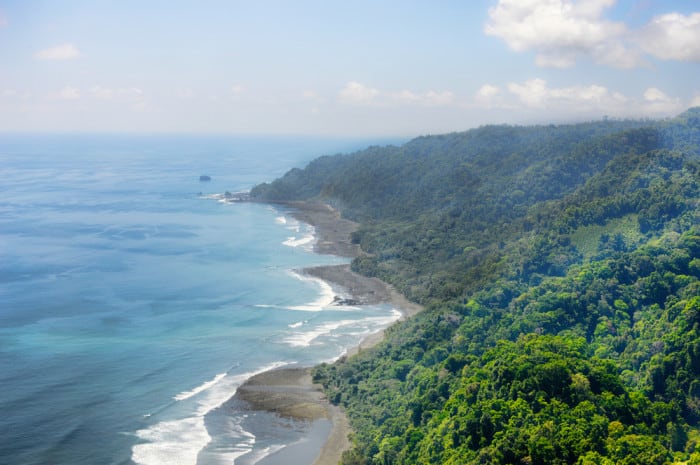Corcovado National Park is Costa Rica’s premier wildlife and hardcore ecotourism destination, visited by hordes of foreigners every year, but most Ticos don’t seem to know what they have in their own back yard.
“It’s estimated that only 1 percent of total visitors to Corcovado National Park in 2014 were Costa Ricans,” says a recent news release from MINAE, Costa Rica’s Environment Ministry.
With the slogan “Vos también sos Corcovado” (“You are Corcovado too”), a national advertising campaign is looking to change all that by promoting Corcovado to Costa Ricans, especially those who live in the Central Valley. There’s a prominent sign up on Ave. 2, and if you drive or bus around San José much, you’ll be seeing more.
“With this campaign not only do we want for more Costa Ricans to visit and become familiar with Corcovado National Park’s beauty and worth, but we also want them to understand the problem faced by the surrounding communities and find ways to work together to solve them,” said Patricia Madrigal Cordero, the vice minister of MINAE.
Corcovado requires every visitor to hire a guide, making it far more expensive than most parks in Costa Rica, and it’s remote enough that most people camp in the park at least one night. It’s possible that the cost, distance and degree of difficulty have made Corcovado a low priority on most Ticos’ travel plans.
Enter the come-to-Corcovado initiative, created to attract visitors but designed to promote conservation. It’s supported by the Osa Conservation nonprofit organization, the National System of Conservation Areas (SINAC) and the Osa Conservation Area (ACOSA), along with local municipalities.
“The consolidation of wild protected areas is a priority for the Solís Rivera administration,” said Environment Minister Édgar Gutiérrez Espeleta. “Corcovado National Park is one of the most biodiverse sites in the world and a natural heritage for present and future generations that we must preserve.”
Added Manuel Ramírez, executive director of Osa Conservation: “Corcovado National Park is the main site of reproduction for wildlife in Osa. It’s a source of economic opportunities for the local populations and it’s the most important tropical rainforest in the country.”







